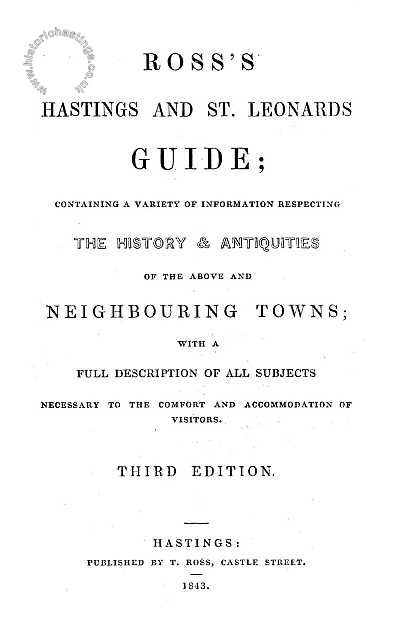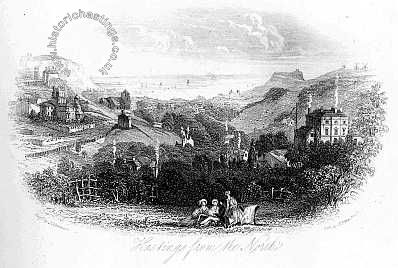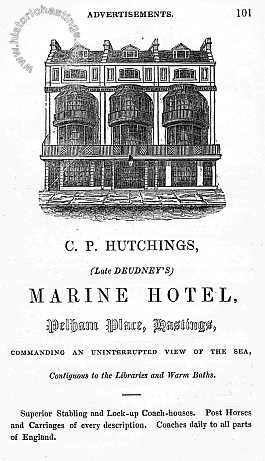
Ross’s “Hastings and St Leonards Guide”
By 1835 when Thomas Ross produced his first Hastings and St Leonards guide the population of Hastings was still under 9000 but was to rise to over 14,000 by the 1851 Census and nearly 26,000 by 1861. There were already a large number of guides on the market but Ross’s Guide was to become possibly the most popular and ran to 13 editions between 1835 and 1863, each an update on the previous between and originally based on other existing guides. Thomas Ross had a very keen interest in the town, he had been Mayor five times between 1856 and 1872, Ross was an amateur archaeologist, JP, Chairman of Guardians, drawing master, author and publisher operating from 6 Castle Street and later Claremont.
Despite being an accomplished artist Ross didn’t include many illustrations in his early guidebooks, all was included was a lithographed map and a folded print of one of his engravings. This may have been to encourage the separate sale of his prints. The third edition broke new ground, it contained 36 pages of advertising, from 1 to 4 letterpress adverts per page. What is interesting is the number of businesses bearing the Royal warrant, that is “by Royal appointment” to the Royal family - no less than 13 businesses – 5 butchers, 2 bakers, 2 professors of music, a fishmonger, a grocer a sadler, a silk mercer and a chemist. By the sixth edition small engravings on thicker paper were included in the guide, showing mainly views outside Hastings and the advertisements had been discontinued.
Left Title page of third edition

 Above an advertising leaflet bound into the rest of the adverts. The Castle Hotel in Wellington Square was demolished in the 1970s to make way for a supermarket.
Above an advertising leaflet bound into the rest of the adverts. The Castle Hotel in Wellington Square was demolished in the 1970s to make way for a supermarket.Left Thomas Ross advertising his own business. Also shows local printer W Ransom in George Street.
 Map from the early editions of the guide, note the Martello Tower on the extreme left with the racecourse above it, moving right the beginnings of St Leonards can be seen. Priory farm still existed and Gas Works is featured. The gasworks company had been founded in 1835, and its inclusion was to show how advanced Hastings was. The site is now occupied by Morrisons supermarket. Looking inland The Ridge appears very remote. Later editions carried a map covering a much wider area.
Map from the early editions of the guide, note the Martello Tower on the extreme left with the racecourse above it, moving right the beginnings of St Leonards can be seen. Priory farm still existed and Gas Works is featured. The gasworks company had been founded in 1835, and its inclusion was to show how advanced Hastings was. The site is now occupied by Morrisons supermarket. Looking inland The Ridge appears very remote. Later editions carried a map covering a much wider area.
This view, folded in 3 to make it fit was the only illustration in the early editions. It shows Belmont House on the left and Hastings Lodge on the right. Note the windmills on the West Hill

“St Leonards, Hastings” from the sixth edition, a view of St Leonards from the sea. On the extreme left is St Leonards parish church, a victim of a doodlebug flying bomb in the last war, further right is Crown House where Queen Victoria stayed as a princess in 1834. In the centre of the buildings is The Royal Victoria Hotel with Southall’s Library, baths etc between it and the sea.



